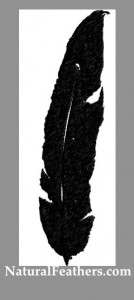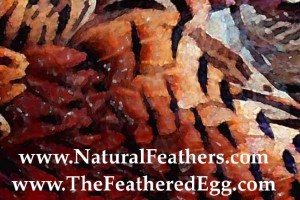I often get requests from feather artists for cruelty-free feathers that are truly black, not blue black, not purple black, but … just… black.
The first time I heard this, I thought “Sure, I have black feathers… no problem!” but then I pawed through my feather inventory and had a hard time finding feathers that were just… black.
Black feathers are often iridescent. Indescribably beautiful. Shimmering teals and greens and turquoise and cobalt and indigo and every kind of purple. But these feather artists didn’t want that. They just wanted black.
And those feathers usually come from the underneath or sides of the bird, or are secondary feathers in wing or tail. The supporting cast of feathers, not the stars.
It turns out that birds can see into the ultraviolet, and the iridescent feathers send messages, usually love notes. The black feathers have more melanin granules, and are often stronger than lighter-colored feathers. This is why birds have black-edged feathers, the black resists wear and tear longer.
I’m still not sure why the artists want simple black, rather than spectacular black… because they are artists and they do not explain, they create! But the rest of my research indicated that black feathers are considered to be messages… maybe from angels, maybe from ancestors.
And a crow feather in your path is considered a warning. Of what, I don’t know, other than a warning not to pick up that crow feather because keeping crow feathers is illegal… warning from fish and game?
Anyway, black feathers are awesome, and harder to find than I thought they were!


